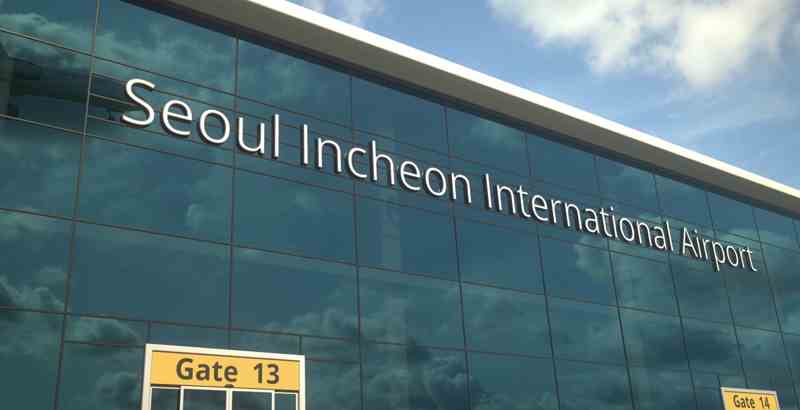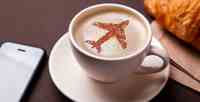
Seoul Tourist Attractions
One of the busiest airports in the world, Incheon Airport serves as Seoul's primary airport. Since it is located west of Seoul, the airport provides easy access to the city's various sights. Down here, you'll find several options that we've compiled for you.
It doesn't matter if you're looking to learn about a new culture, try some delicious contemporary cuisine, or get out of your comfort zone, Seoul offers something for you.
Visit us at getyourguide.com for more information about exciting outdoor pursuits in Seoul and the rest of South Korea.
Seoul: Royal Palace Morning Walking Tour
Your first stop after arriving in Seoul should be Deoksugung Palace. The tour starts at Cheonggyecheon, an urban stream that runs for 11 kilometers through the heart of Seoul's current park system.
Seoul's former mayor, Lee Myung-bak, began a project to demolish the elevated expressway and restore the stream in July 2003. Reviving Seoul's economy was a secondary goal of the project, but bringing back the region's history and culture, which had been lost for 30 years, was a primary one.
Next, stop by Cheongwadae (The Blue House), the presidential palace and official residence of the President of the Republic of Korea and the site of the Joseon royal garden. The Blue House is an architectural complex that blends traditional Korean design with more contemporary touches.
The Cheongwadae Saranchae Presidential Exhibition Hall, which opened in January 2010, will be one of your stops. The term "sarangchae" refers to the designated area of a traditional Korean residence where visitors are welcomed. The 'Sarangchae' of a home is typically not connected to the 'Anchae' where the owners live.
It is a standalone structure in front of Cheongwadae, hence the name "Cheongwadae Saranchae." The changing of the royal guard is a highlight of the tour. This is a fantastic chance to see a rare example of Korean tradition.
The next stop is Gyeongbokgung Palace, the grandest of the five palaces constructed during the Joseon era. The city's administrative center was the central government district of Seoul, which included the principal structures of Gyeongbokgung Palace.
In a sense, they were symbols of Joseon Dynasty authority. The aesthetic and tradition of the Joseon royal court were perfectly infused with ancient Chinese architectural ideas.
Located on the grounds of Gyeongbokgung Palace, the National Folk Museum of Korea is a South Korean national museum depicting traditional Korean living through replicas of historical artifacts. The museum features three permanent galleries, two temporary galleries, a shop, and a research library.
Later, go to Jogyesa, the most important Buddhist temple in Korea's Jogye Order. In 1936 it evolved into its current form. It has since been pivotal in developing Seon Buddhism in modern South Korea.
Formerly erected in 1395 during the early Joseon Dynasty, the current temple dates to 1910 and was initially known as Hwanggaksa. Taegosa was the name during the Japanese occupation, but in 1954 the current spelling was adopted.
At the end of the tour, you will be dropped off at either the Myeongdong Lotte Hotel or the Namdaemun market.
Seoul: City Highlights Morning E-bike Tour
Explore the historic district of Seoul on an electric bike. You will ride an e-bike up West Mountain to see the city wall after visiting the royal palace and the charming West Village. Your journey will begin at the K Style tourist information center.
You may get a great view of Seoul and its majestic skyline from the peak. The oldest original Joseon dynasty gate to the city is up next. Then it's off to the mountain village of Baum, where the blockbuster movie Parasite was shot.
Your return to the city will be a spectacular downhill ride. You may easily ride your bike past the presidential Blue House and into the nearby Bukcheon Hanok village to check out the traditional Korean dwellings there.
After a brief stop at the calm Jogyesa temple, your e-bike will whisk you back to the tour's beginning on the Cheonggyecheon river, where you'll hear the tour's concluding tale about the Gwangtong bridge and get recommendations for your next destination.
Seoul: Royal Palace and Folk Village Tour with Lunch
Visit its most notable sites and gain insight into Seoul's history and folk customs. Check out the sights of Jogyesa, including the National Folk Museum. Check to see the local temples and indulge in the cuisine.
After a morning pick-up from your accommodation, head to the cleanest stream in Seoul, the Cheonggyecheon Stream, an 11 km long modern stream that passes through downtown Seoul.
Cheonggyecheon is a restored creek that has been there since the Joseon Dynasty; it was created as part of an urban renewal effort. It's hard to believe that this pristine river was once a drain.
The Blue House, the Korean President's official residence, is up next. While there, check out Cheongwadae Saranchae, an exhibition center dedicated to the Korean President that opened in January of this year.
The National Folk Museum and Gyeongbokgung Palace are next on the itinerary. It was the primary palace of the Joseon Dynasty (1392-1910) and was constructed in 1394 by its first king, Taejo. All five palaces from this period pale in comparison to this one.
On its grounds, you'll also visit the National Folk Museum of Korea, where you'll discover displays of about 4,000 objects from Korea's traditional way of life. There are six exhibition spaces here, including three permanent galleries, two temporary galleries, a shop, and a library.
Later, stop by Jogyesa, a famous teahouse on Insa-dong, a cultural thoroughfare near Gyeongbokgung Palace. It is the principal temple of the Jogye Order of Korean Buddhism (since 1936), and it plays a prominent role in the current state of Seon Buddhism in South Korea.
Formerly erected in 1395 during the early Joseon Dynasty, the current temple dates to 1910 and was initially known as Hwanggaksa. Taegosa was the name during the Japanese occupation, but in 1954 the current spelling was adopted.
Once you've finished here, head on to the Korea Folk Village. The Korea Folk Village is a living museum that portrays the lifestyle of Koreans several centuries ago.
Traditional craftspeople include potters, weavers, blacksmiths, and others. There is also a tiny theater where you may see traditional music and dance performances, in addition to the 270 traditional homes.
Seoul: Northern Sides of Seoul / Gwangjang Market
To kick off your day, we'll pick you up at your hotel and take you to Gyeongbokgung Palace, the grandest and most impressive of the five royal residences we'll visit today.
The "northern village" of Bukchon Hanok has various cultural centers, guesthouses, and eateries in restored traditional Korean homes.
Take a stroll to Samcheongdong, where you'll find cafes, museums, antique shops, and galleries to satisfy your artistic and retail cravings. The next stop is the Ihwha Mural Village, located a short distance uphill from the lively Daehakno district.
The hustle and bustle of the city below will fade away as you ascend Mount Naksan, but you may find a pleasant surprise waiting for you at the top of street art.
Gwangjang Market, the first market in the country, is your final stop. The wide variety of high-quality goods at reasonable rates will make shopping there fun, even if the items are not named brands. Get some lunch or snacks at the market. It's well-known for its tasty offerings.
Seoul: Gyeongbokgung Palace History Walk
Gyeongbokgung Palace was built in 1395 and served as the Joseon Dynasty's premier palace. Gather at Gyeongbokgung station, then proceed to the palace's main gate to meet your guide. Learn from the insider knowledge of Korean history that your English-speaking guide possesses.
Walk about the palace and take in the intricate details. Explore the grandest palace of the Joseon Dynasty and discover its rich history and mysterious past. Photograph the spots where monarchs previously walked.
Learn how the dynasty shaped Korean culture over five centuries. Stop in the Gyeonghoiru pavilion, the palace's main hall, for the final stop on your tour. After the tour, take as much time as you like to explore the palace.
Morning 3-Hour Intro to Seoul Tour (Palace, Temple & More)
The tour will begin at the hotel in Seoul between 8 a.m. and 9:20 a.m. The Jogyesa Buddhist Temple should be your first stop. Take the stunning view of the locust trees in front of the Daeungjeon. The main temple building and the Daeungjeon date back to the early 500s, so you should expect to be awestruck by their age.
Keep going to Gyeongbok palace to see the first changing of the guard. Gyeongbok Palace, erected in 1395, is the finest of Seoul's five principal palaces and is widely considered the most magnificent.
Stop at Cheongwadae, the presidential blue residence, to see the stunning blue tiles for which it is famous. The tiles and roof are in startling contrast to the rugged backdrop of Mount Bugaksan. Learn how the blue house's blue tiles and gentle curve towards the top symbolize the attractiveness of Korea.
You can go to Cheongwadae Sarangchae while you're here. Visitors can walk in the footsteps of Korean presidents and gain insight into Seoul's unique past before the tour closes at 12:30 p.m.
From Seoul: DMZ Half- or Full-Day Trip
Come on a day excursion from Seoul to see the Demilitarized Zone that separates North and South Korea. Look at the world's most heavily defended border and learn more about the Korean War. Stop by some famous locations like the Dora Observatory and the Third Tunnel.
The excursion will start with a pick-up in Seoul's downtown area and a trip to Imjingak Park. When you get to Imjingak Park, check out the Freedom Bridge and the vintage steam train, poignant reminders of the Korean War carnage.
Visit a memorial to those who lost their lives fighting the Korean War. Explore the Demilitarized Zone (DMZ) and see the Third Infiltration Tunnel and DMZ Exhibition Hall to learn more about South and North Korea fighting.
Go to the Dora observatory to visit North Korea and its propaganda village through the telescopes. After a relaxing ride through Unification Village, you'll be dropped off at City Hall in Seoul. The full-day tour includes lunch and a trip to the Korean War Memorial.

FREE Cancellations, NO card fees!

Value Options View Offers
Useful Information about Incheon Airport

Incheon Airport Passenger Traffic Surges 90.3% in Q4 2023, Closing Gap to Pre-Pandemic Levels. While not exceeding Q4 2019 figures yet, the data shows significant recovery momentum, reaching 91.6% of its pre-pandemic volume.
View...
Incheon Airport Soars with 182.65% Passenger Increase in Q3 2023, Nearing Pre-Pandemic Levels and Outpacing Post-Pandemic Q3 2021 Growth
View...
See all the airport lounges, locations and opening times available at Incheon Airport
View...
See all bars and restaurants at Incheon Airport, including locations and if they are before or after check-in
View...